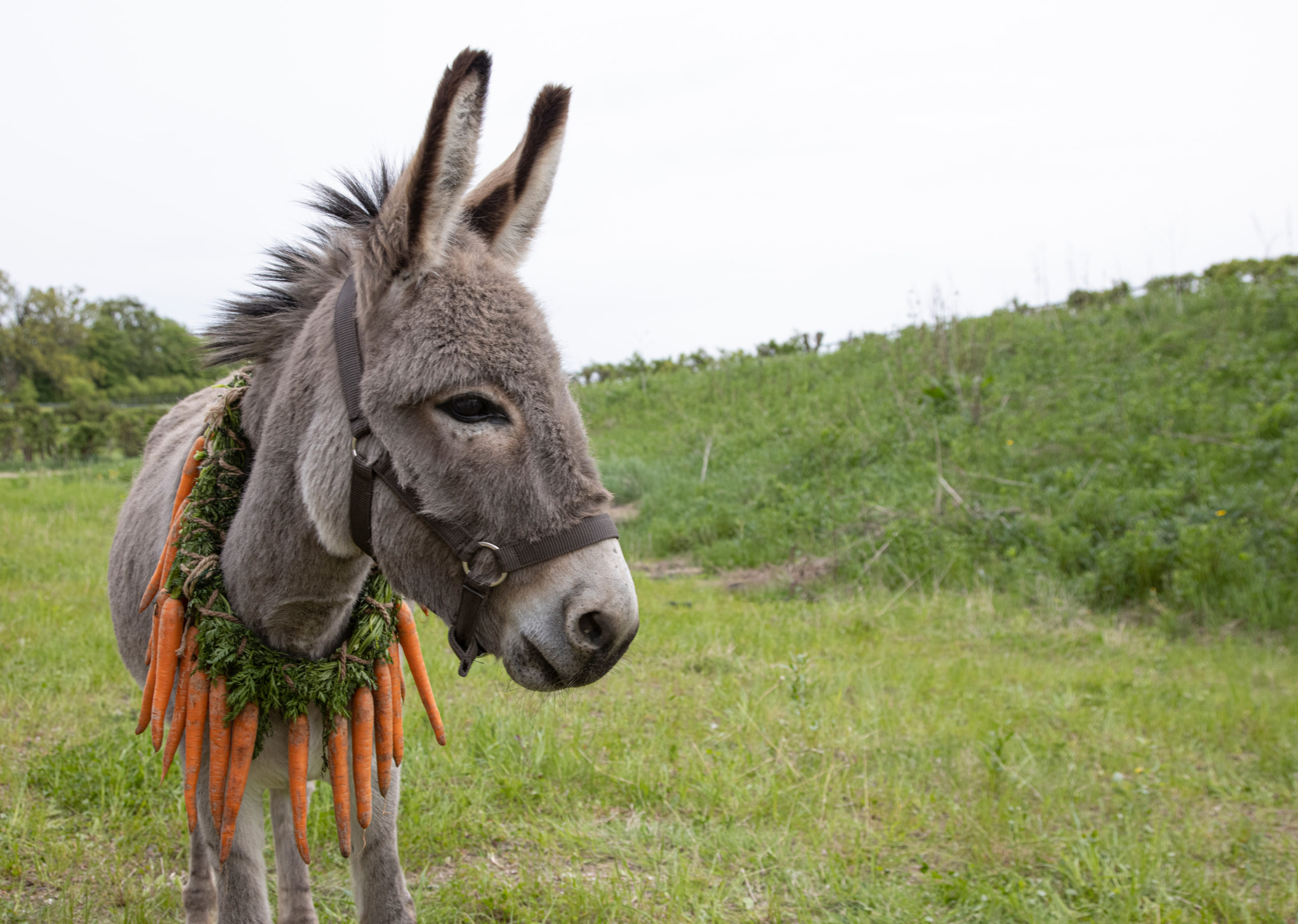EO was an official selection of the 42nd Hawai‘i International Film Festival presented by Halekulani.
The first thing you notice about EO, Jerzy Skolimowski’s bold reinterpretation of Robert Bresson’s 1966 drama AU HASARD BALTHAZAR, is that it lacks a human touch. This isn’t to say that it lacks emotion: EO abounds in pathos and humor, in otherworldly horror and alienation. Rather, EO—about the eponymous donkey, so named after its “eee-oohhh” bleating noises—is set so squarely within the perspective of its animal protagonist that one cannot imagine any human, let alone an 84-year old Polish filmmaker, having directed it.
Which seems very much to be Skolimowski’s intent. The film incorporates a number of audiovisual tricks to bring us directly into EO’s point of view, whether it be through the softening of focus at the edges of the screen, mimicking a donkey’s vision; or the muffling of audio to bring us into his aural world. This tactile immediacy transports us into an entirely sensory perspective, and is undoubtedly the film’s standout element. It lets us into this donkey’s world, and allows for his journey across a crazed European hellscape to be felt all the more powerfully.
We first meet EO inside a Polish circus, where he lives a life subject to perennial human amusement. As he performs to a jeering audience, he becomes awash in a flickering red light. It strobes rapidly between darkness and a harsh, painful neon, immediately signaling a world of abuse. Performing alongside EO is Kasandra (Sandra Drzymalska), his devoted human caretaker. Kasandra, who treats EO as her equal, proves the only trustworthy human in his life, made clear by later dream sequences (yes, donkey dream sequences) that reminisce over their time together. Kasandra’s presence cannot stop the presence of the red light, however: her love cannot put an end to a system of human domination.
This red light recurs in many instances throughout the film, typically in shots that blur conventional human/animal divides. A drone shot that mimics the flight of a bird, a hellish vision of a four-legged robot crawling across an open field—these are sequences of corporeal irony that puncture the film’s cruel atmosphere. A similarly ironic act commences EO’s journey: animal rights activists protesting animal abuse raid the circus, but in doing so unwittingly separate him from Kasandra.
EO then forges his way into European wilds. He meets football teams whose split loyalties render him an idol and an effigy in quick succession. He encounters an illicit meat dealer who treats him with kindness, despite carnivorous intentions. He journeys into a peaceful forest, only to be disrupted by hunters with laser-mounted rifles. Positive or negative, each of these instances reduce EO to a state of victimhood. In one scene, he sits inside a solemn cage while looking out at horses galloping across an open field, suggesting that neither animal can be separated from human hegemony.
Such a vision of 21st-century Europe is pessimistic, to be sure, yet Skolimowski includes an occasional touch of compassion. In EO’s strangest encounter, he meets a young priest (Mateusz Kościukiewicz), who quickly adopts him as a friend. Touched by EO’s presence, the priest tells him that he has previously eaten donkey meat, and offers an earnest apology. It is perhaps the film’s most genuine moment, and only makes the following scene, in which the priest comes home to his aristocratic and incestuous mother (played in cameo-appearance glory by Isabelle Huppert) all the more off-putting.
As expressionistic as it is documentarian, EO is charged with a kind of Euro-art film energy that feels noticeably out of place in 2022. Skolimowski borrows as much from Neorealist polemics as from his own country’s Cinema of Moral Concern, translating postwar cynicism to a world defined by inept technocrats and environmental degradation. And bounding through it all is a lovely, lonely donkey wandering aimlessly through a human wasteland, unable to understand the chaos before him. As the film reaches its heart-rending conclusion, we come to the realization that we are just as lost.
 Jim Fahey is an emerging film critic and curator who just entered the industry as the Assistant Director of the Common Good International Film Festival, based out of Claremont, CA. He has spent the past year building his resumé at the University of Edinburgh, where he completed a Master’s program in Film, Exhibition & Curation. During that time he served as a film critic for The Student, the longest-running student newspaper in the UK, and also began Airplane Mode, a film-review blog currently available on Substack. He is a driven student of cinema and is excited to develop his critical voice at HIFF’s Online Creative and Critics’ Immersive.
Jim Fahey is an emerging film critic and curator who just entered the industry as the Assistant Director of the Common Good International Film Festival, based out of Claremont, CA. He has spent the past year building his resumé at the University of Edinburgh, where he completed a Master’s program in Film, Exhibition & Curation. During that time he served as a film critic for The Student, the longest-running student newspaper in the UK, and also began Airplane Mode, a film-review blog currently available on Substack. He is a driven student of cinema and is excited to develop his critical voice at HIFF’s Online Creative and Critics’ Immersive.

The mission of the HIFF ONLINE CREATIVES & CRITICS IMMERSIVE (HOCCI) program is to encourage film criticism in Hawai‘i by using the influencer branding strategies to spark career opportunities in the State and not be hampered by oceans, state borders and distance, because geography is no longer a barrier. Ten mentees participated in this program, giving them press industry access to HIFF42. In addition, the cohort attended mentoring sessions by working critics in the online film journalism community in unique silos: Writing, Podcasting, Video Essays and Vlogging.
Mahalo to DBEDT Creative Industries and Creative Lab Hawaii for their support.



